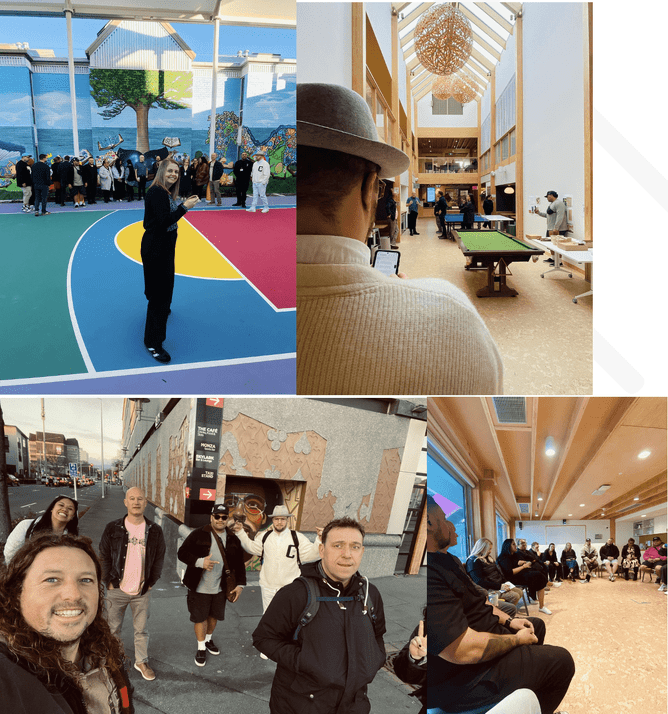Melissa Gibson, CE of the Len Reynolds Trust has worked closely with the Waikato Youth Sector in systems change mahi over the past five years. With a strategy that is now designed and being implemented to support and enable cross sector innovation and collaboration in line with Te Tiriti Ō Waitangi, Melissa organised a 14 strong Youth Sector Leaders trip to Ōtautahi.
From 16–18 June 2025, a dynamic delegation of youth sector leaders from across the Waikato touched down in Christchurch for a strategic haerenga (journey) of learning, connection, and inspiration. The goal: to explore leading models of integrated youth services and housing, strengthen cross-regional ties, and bring fresh thinking back home. The delegation was supported by Len Reynolds Trust, Waikato Wellbeing Project, Hamilton City Council, Western Community Centre and Te Runanga o Kirikiriroa.
Here is a brief overview and summary of the trip. You can read more about the trip and the learning gained at: Te Haerenga Rangatahi – A Learning Journey to Ōtautahi | LEN REYNOLDS TRUST
The 14-person delegation included representatives from Manaaki Rangatahi, Mana Services, Twenty20 Sustainable Housing, Te Rūnanga o Kirikiriroa, Seed Waikato, Western Community Centre, Here to Help U, Hamilton City Council, and Len Reynolds Trust — a powerful mix of community, council, and philanthropic leadership, united by a shared commitment to rangatahi wellbeing.
We had a packed three days, meeting and visiting various kaupapa and facilities, learning from and discussing ideas all around Youth Development and Facilities. Needless to say, it was an incredible trip with so much learning and whakawhanaungatanga which has really helped our sector become not only stronger and better connected, but so much clearer on what good looks like when we are discussing places and spaces for our rangatahi and our youth sector organisations.
We visited seven standout organisations, including the groundbreaking Christchurch Youth Hub, kaupapa Māori leader Te Ora Hou, and the advocacy-driven Canterbury Youth Workers Collective. We also connected with YCD, Youthline Christchurch, Te Tahi Youth, Te Kura, and the Wayne Francis Charitable Trust — each offering a unique lens on youth development.
Key Insights
Place-based care works: Community-rooted services like Te Ora Hou, grounded in manaakitanga and whanaungatanga, build deep trust and belonging.
Collaboration is intentional: Co-location of services is helpful — but true integration requires leadership hui, shared values, and strong governance.
Housing with dignity: The Youth Hub’s 22-bed model combines case management, rent contributions, safety, and independence.
Kaupapa must lead funding: Long-term, relational investment — not short-term contracts — enables systems to evolve with rangatahi at the centre.
Flexible learning saves futures: Te Kura’s outreach supports disengaged youth with dual enrolments, devices, and kaiako-led support.
Sector voice is vital: Collectives like Rerenga Awa are shaping policy through ethical training, youth audits, and unified submissions.
Ōtautahi didn’t just show us what's possible — it reminded us why we do this work. When youth voices are respected, when collaboration is courageous, and when place and purpose lead the way, real transformation happens.
Now it's Waikato's turn. With strengthened relationships, sharper insight, and deeper resolve, this haerenga marks not an ending, but a beginning. Let’s take what we’ve learned and build systems our rangatahi deserve — bold, inclusive, and led by kaupapa that bring them home.


